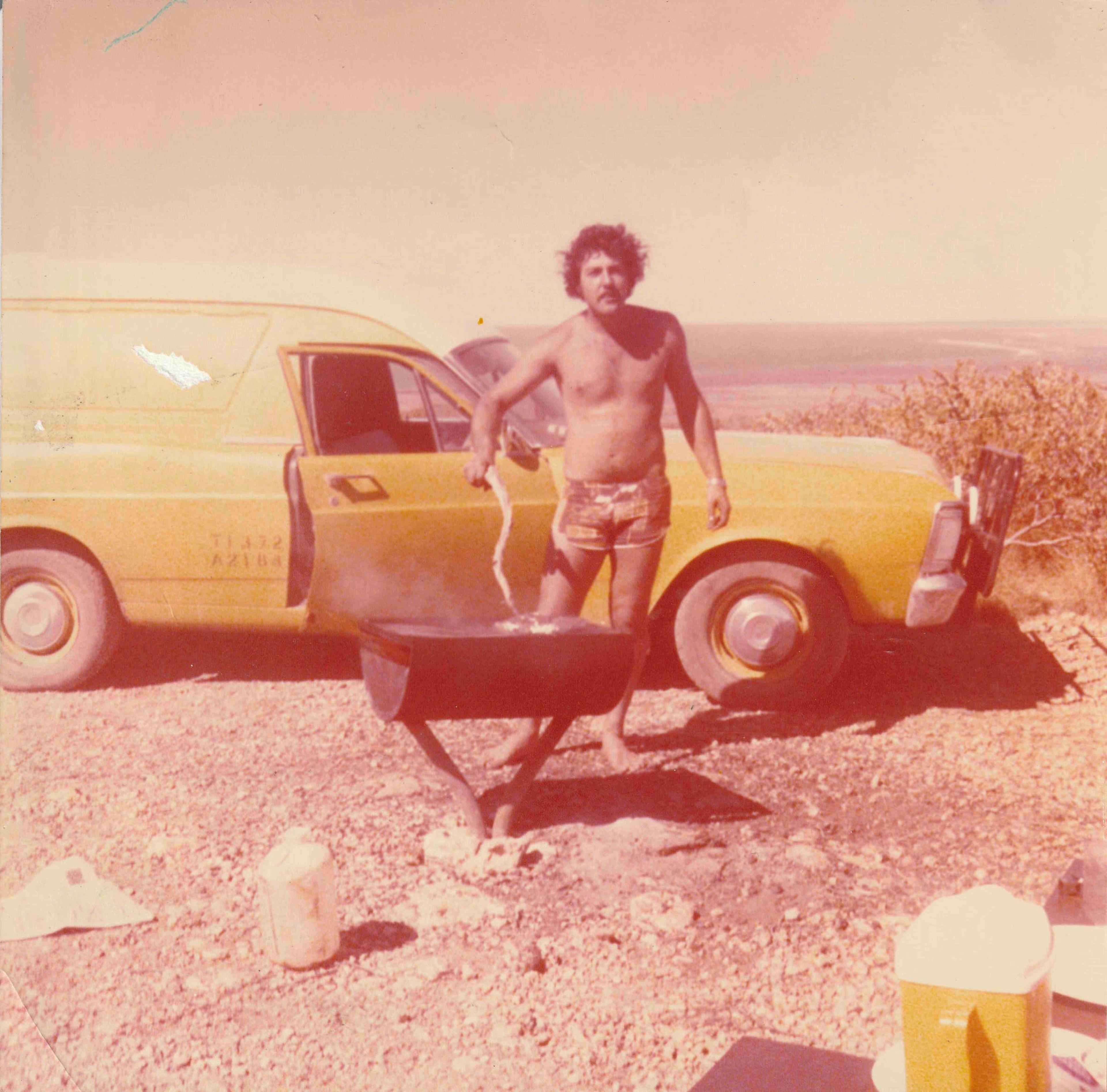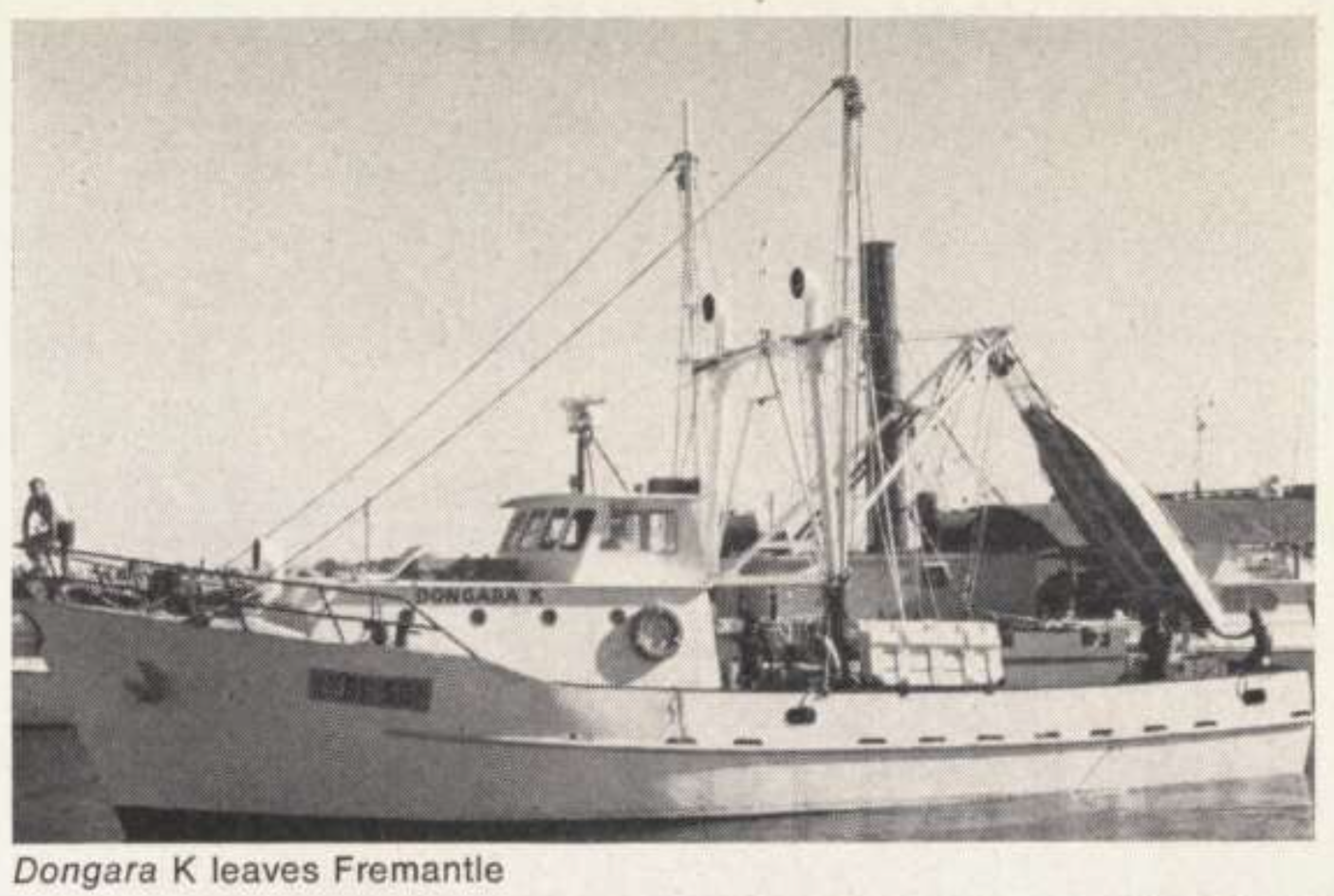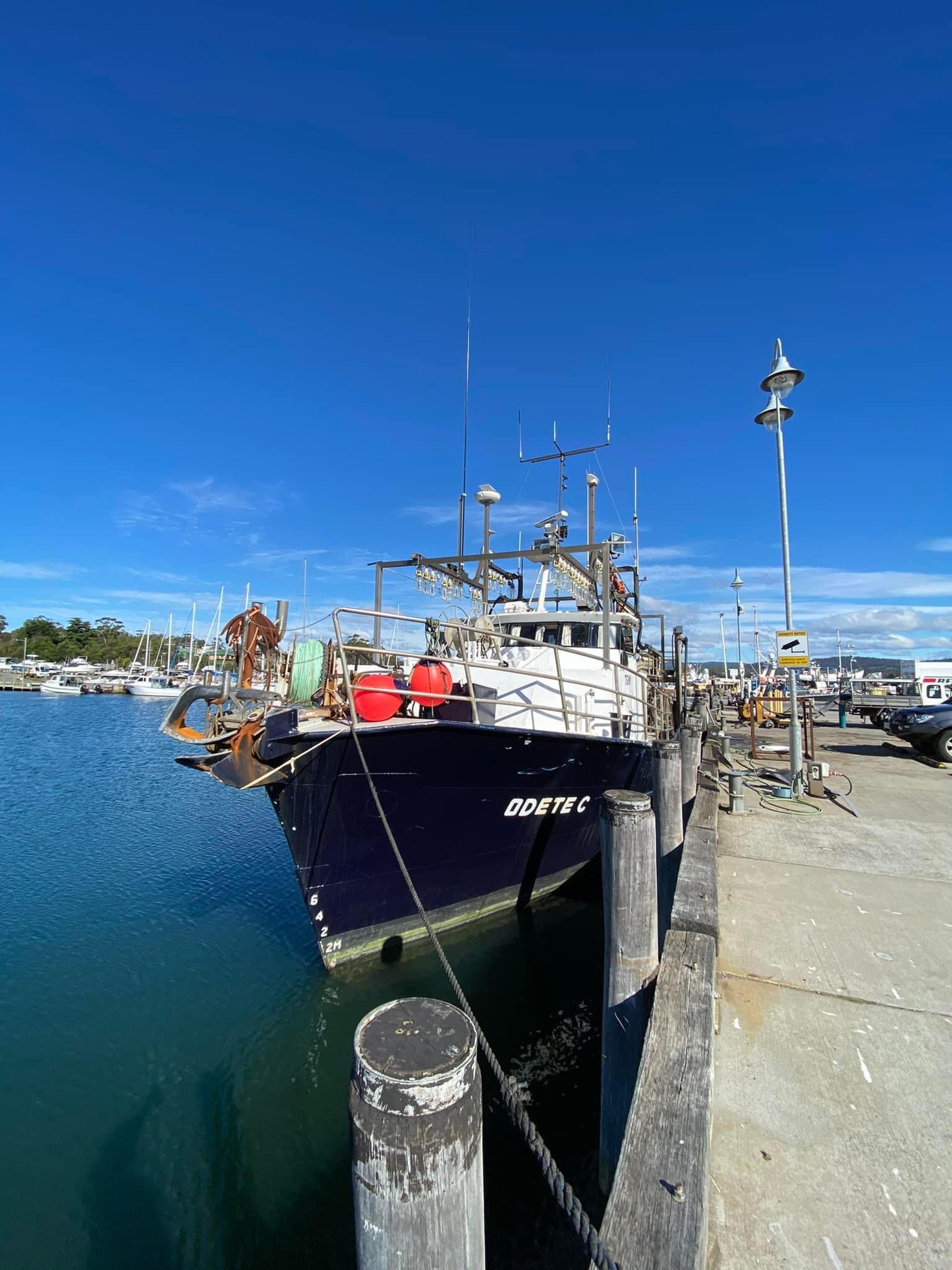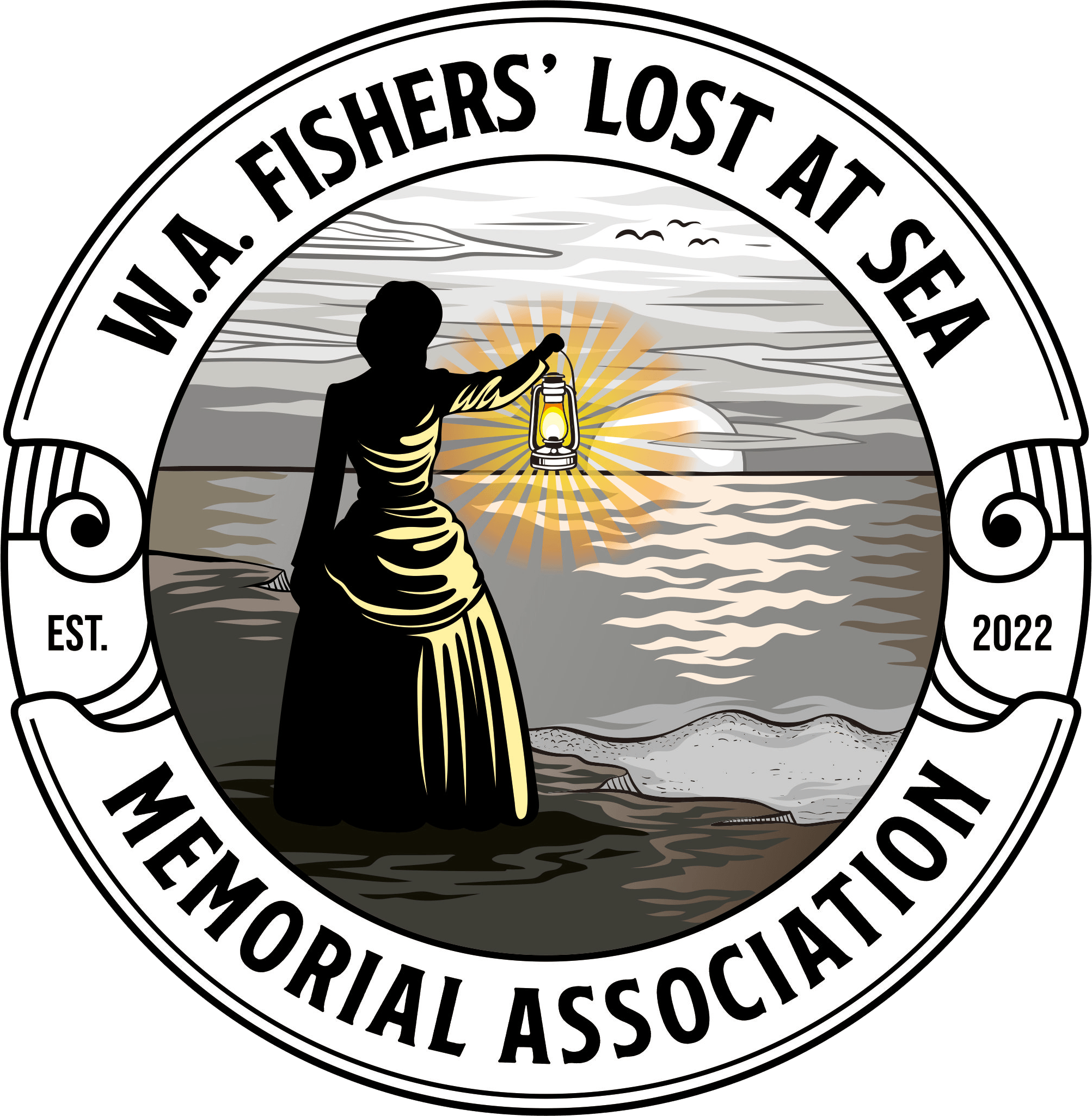Miss Odete
Vessel Name: Miss Odete
Alfio Romeo
Ian Robert Collins
Ian Crawford
Lost at sea; Bodies never recovered
3 July 1979

The Last Photo of Alfio Romeo taken 2 weeks prior to his disappearance

The Dongara K - Similar to the Miss Odete

"K" Class Trawlers in Fremantle

The Odete C - The Replacement vessel for the Miss Odete

The Correia Family circa 1965
The story of the Miss Odete starts with Manuel Correia. Manuel was born in Paul do Mar in Madeira, Portugal in 1925. After venturing to America, then Panama and Cost Rica to find work, he returned to Paul Do Mar where he learnt that some of his fellow villagers had sailed from Cape Town to Fremantle to work in the Crayfishing industry. When he arrived in WA, he began working in Lancelin and Dongara. He also worked with Sam De Sousa on the Lady of Fatima.
After several years of hard work, he was ready to send for his wife Amelia and three sons – Manuel Joao (John), Jamie and Felix. Manuel’s first fishing boat was the Costa Rica. Crewed by his eldest son John, his brother Pedro and several cousins, the new boat signalled the start of the Correia fishing business. Manuel and Amelia also extended the family with three daughters – Ligia Maria, Imilhia and Odete.
In 1965, Michael George Kailis approached Manuel to fish for prawns in the Exmouth Gulf. The following year, the Correia’s joined in pioneering the prawn fishery in WA’s North-West. Manuel built another boat called the Emanuel for prawning because in those days, the fisheries department had released a new law that prohibited a cray boat being used for prawning. Eventually, the boys convinced their Father to build a bigger vessel to capitalise on the expanding fisheries in the Exmouth Gulf. The 63-ft “K” class prawn trawler, Miss Odete was built for the 1973 season and for the first time all four Correia men were on the boat together. To this day, the Miss Odete holds the record for the largest catch in the Exmouth Gulf. After several years, the Sons bought a fish shop which allowed them to retail and wholesale their catch. The Correia fishing enterprise continued to expand.
M.G. Kailis Gulf Fisheries built most of the boats for the Correia family including the Lady Joyous, Angelina C, Amelia C and the Miss Odete. The Miss Odete was registered to Manuel’s son, John and was named after the youngest sister, Odete.
In 1978, Manuel’s wife Amelia passed away at just 54 years of age. The following year, further tragedy would affect the Correia family and 3 other families.
The Miss Odete left Learmonth at 3pm on Monday 2 July 1979 bound for Fremantle for a refit. Onboard were skipper Alfio (Alf) Romeo (21) of Gooseberry Hill, assistant skipper Len Crawford and deckhand Ian Robert Collins (27) of Palmyra. All were experienced seamen, and the trawler was equipped with safety gear. It was painted blue and white with the registration number LFB F617 painted high on the bows. It was carrying a four-man life raft and a four-metre dinghy. The boat’s engine had been given a partial overhaul in Exmouth just 3 weeks prior.
It was scheduled to have its brine tank replaced with a freezer installation. It was expected in Fremantle on Thursday 5 July, noting the journey usually took 75 odd hours. The last radio contact was made between 5am and 7am on Tuesday 3 July when the skipper gave a position that they were 14 kilometres off Cape Cuvier.
By the Friday the trawler was officially listed as overdue and coastal shipping had been alerted. At the time there were fears for their safety as there were gale force winds off the North-West Coast. It was considered that the vessel may have taken shelter in the South Passage whilst waiting for the weather to ease, or it had gone out farther to sea to avoid the weather.
On Saturday afternoon an aerial search was coordinated by the Department of Marine Operations, and the Coastal Surveillance Centre headquarters in Canberra. The initial search ruled out any hope the missing boat might be ashore or sheltering from weather – including Shark Bay and the Abrolhos Islands.
As John Correia stated to the papers, “Alf is one of the best skippers I know… they must be somewhere… they’ve got anchors onboard and you just can’t get lost in a boat like that.”
By Sunday 8 July, 24 flights had been made from Perth, Geraldton and Carnarvon. On Monday 9 July a further 9 flights were made – 1 RAAF Orion aircraft and 8 chartered civilian aircraft conducted a pattern search for the survivors. Tuesday saw another 8 aircraft make a pattern search off the coast for the missing trawler. They covered an area from Cape Naturaliste to Point Cloates and about 200 kilometres out to sea. The search area covered more than 60,000 square kilometres.
Albert Collins, Ian’s father, was later interviewed by Norman Aisbett of the West Australian Newspapers. His family had refused to give up hope. He had lost count of the times he had driven to the south mole in Fremantle and waited in the hope of seeing the boat, perhaps limping back into Fremantle after its ordeal.
Sadly, not a single trace of the vessel or its crew were ever found, and to this day, remains a mystery. These men have no final resting place and no memorial. For their families it represents unresolved grief and a lifetime of unanswered questions about their fate. It was by chance that none of the Correia men were onboard during that ill-fated trip.
At the time of the disappearance, Alf was engaged to get married to Merren Bailey. In desperation, Alf’s Father, Salvatore Romeo, sought the advice from a clairvoyant who suggested the vessel was in East Africa. They both searched for him to no avail.
The Odete C replaced the Miss Odete after it disappeared without a trace in 1979.
